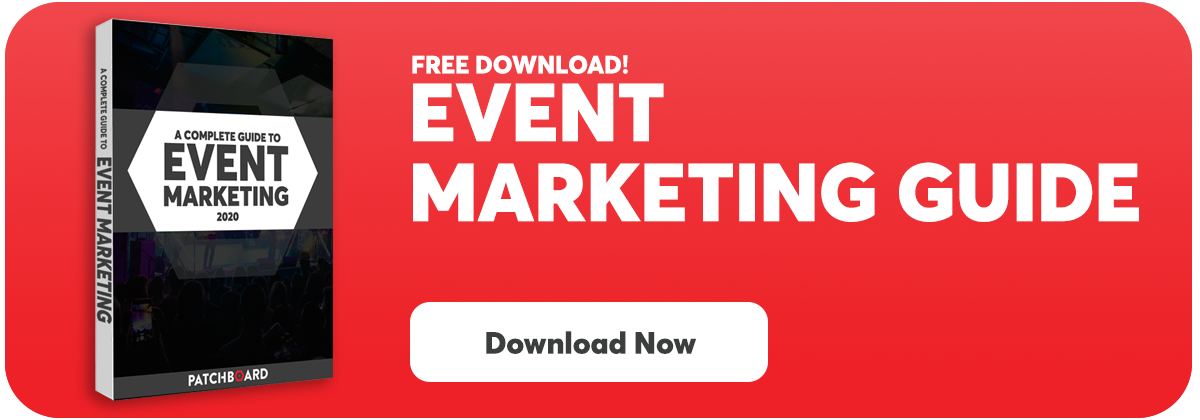Event Marketers that have a deep understanding of both booking and marketing events can help talent buyers make informed decisions when it comes to drafting an offer.
When doing market research for a potential show you would traditionally reach out to your friends at local radio stations, alternative weeklies, and maybe the local record store (it’s probably been a few years since this was your go to strategy). These days you can find a lot of valuable information online by researching Pollstar, local Spotify streams, YouTube views, Billboard charts, etc.. This guide explains how you can use Facebook’s Ads Manager to do some really quick & dirty market research.
How To Use Facebook For Artist Research
Knowing how many people follow an artist on Facebook can be very valuable, especially when booking emerging artists. Follow these simple steps to get a good understanding of how popular an artist is on Facebook/Instagram in your market:
- Log in to your Facebook Ads Manager account.
- Create a new Campaign.
- The objective doesn’t matter since we won’t actually be creating a campaign, so just select engagement & continue.
- Define your market under locations.
- Under Detailed Targeting, type in the artist’s name.
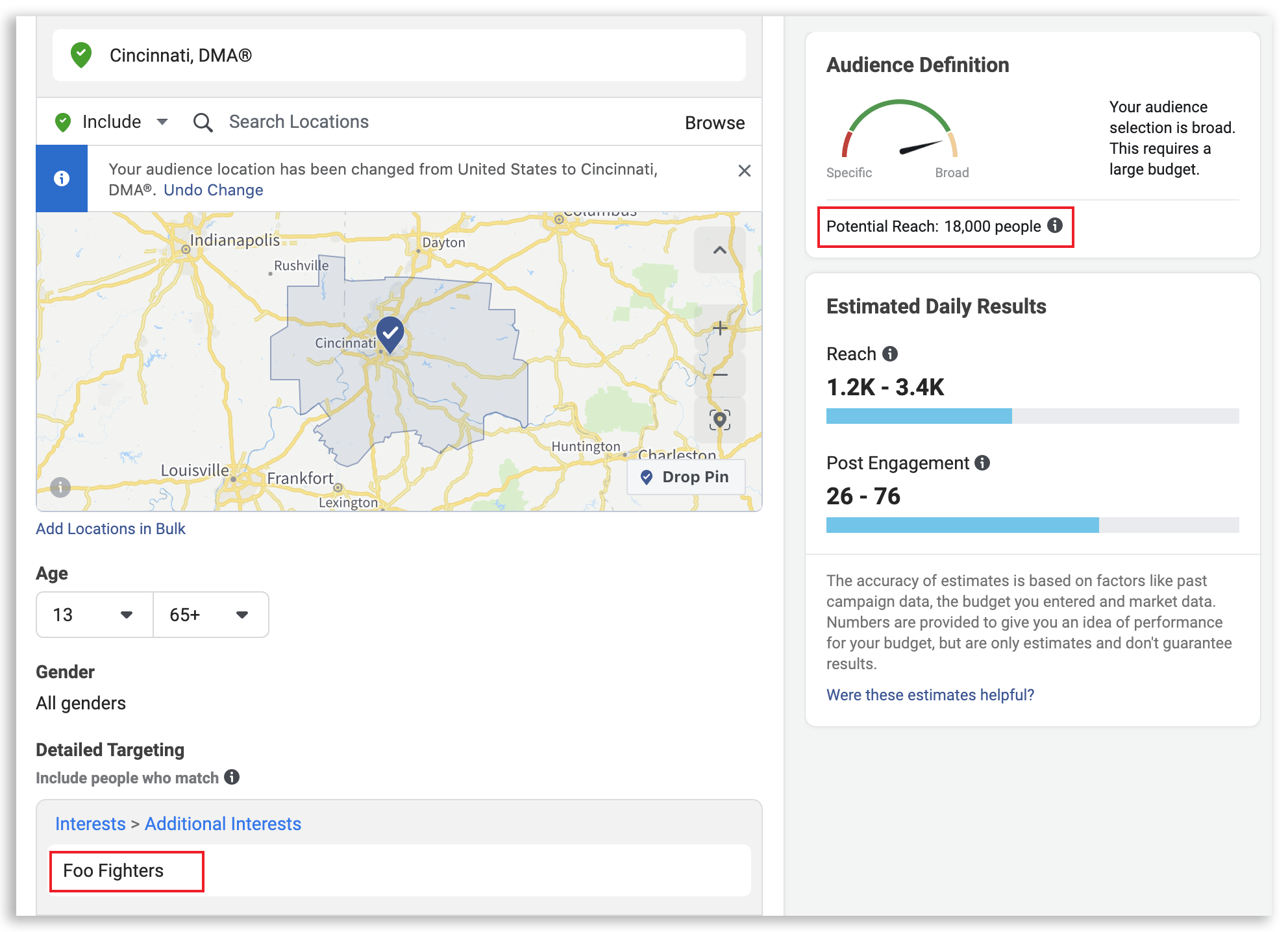
- Take note of the Potential reach number in the far right column. This gives you a good indication of how many people in your market follow a particular artist on Facebook/Instagram.
What if the potential reach is fewer than 1,000 people?
A few simple steps will unlock some valuable information for marketers and promoters working in smaller clubs:
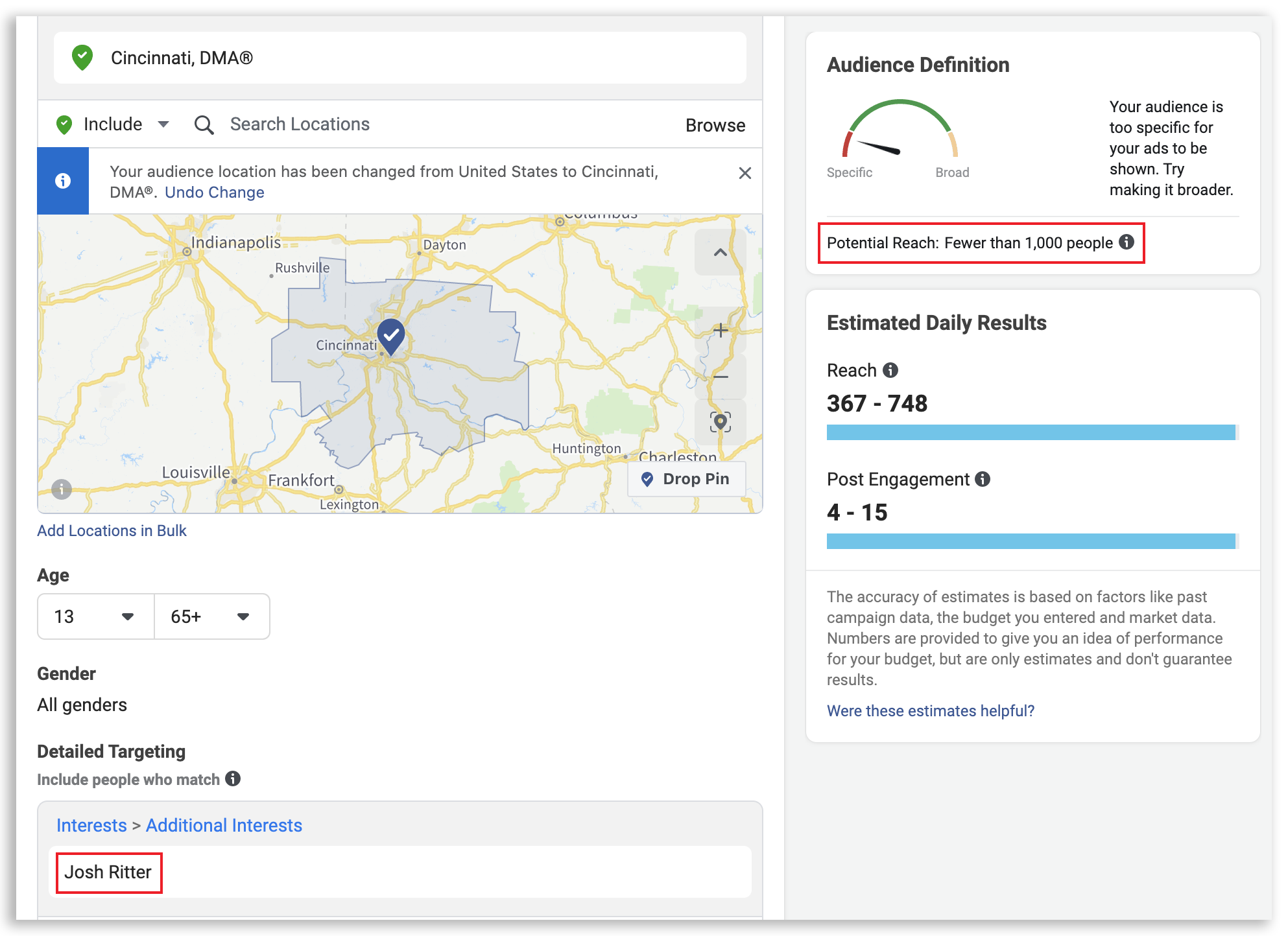 As an example, Let's Find out how many people follow Josh Ritter in Cincinnati. At first, our result is fewer than 1,000.
As an example, Let's Find out how many people follow Josh Ritter in Cincinnati. At first, our result is fewer than 1,000.
- After completing the steps above, think of an artist that has little to no cross-over with the artist you are researching. As an example, I’ll use Dropkick Murphys. I know they have over 1,000 local followers + there is not much cross-over with Josh Ritter fans. Add them in as an additional interest.
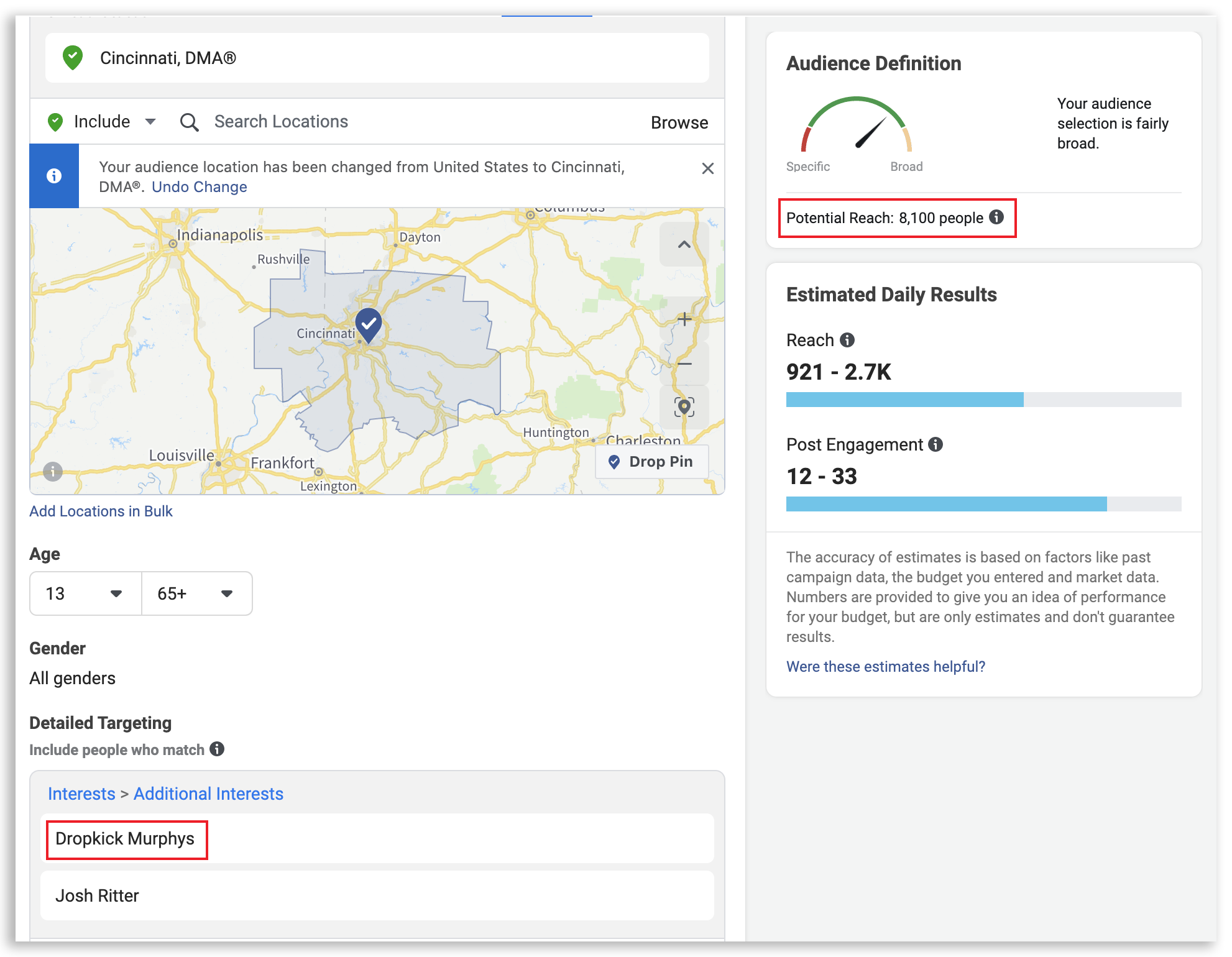
- Take note of the updated Potential Reach number in the far right column. If it is greater than 1,000, Write it down. Otherwise, think of a more popular artist to compare to. In our example, our updated potential reach is 8,100.
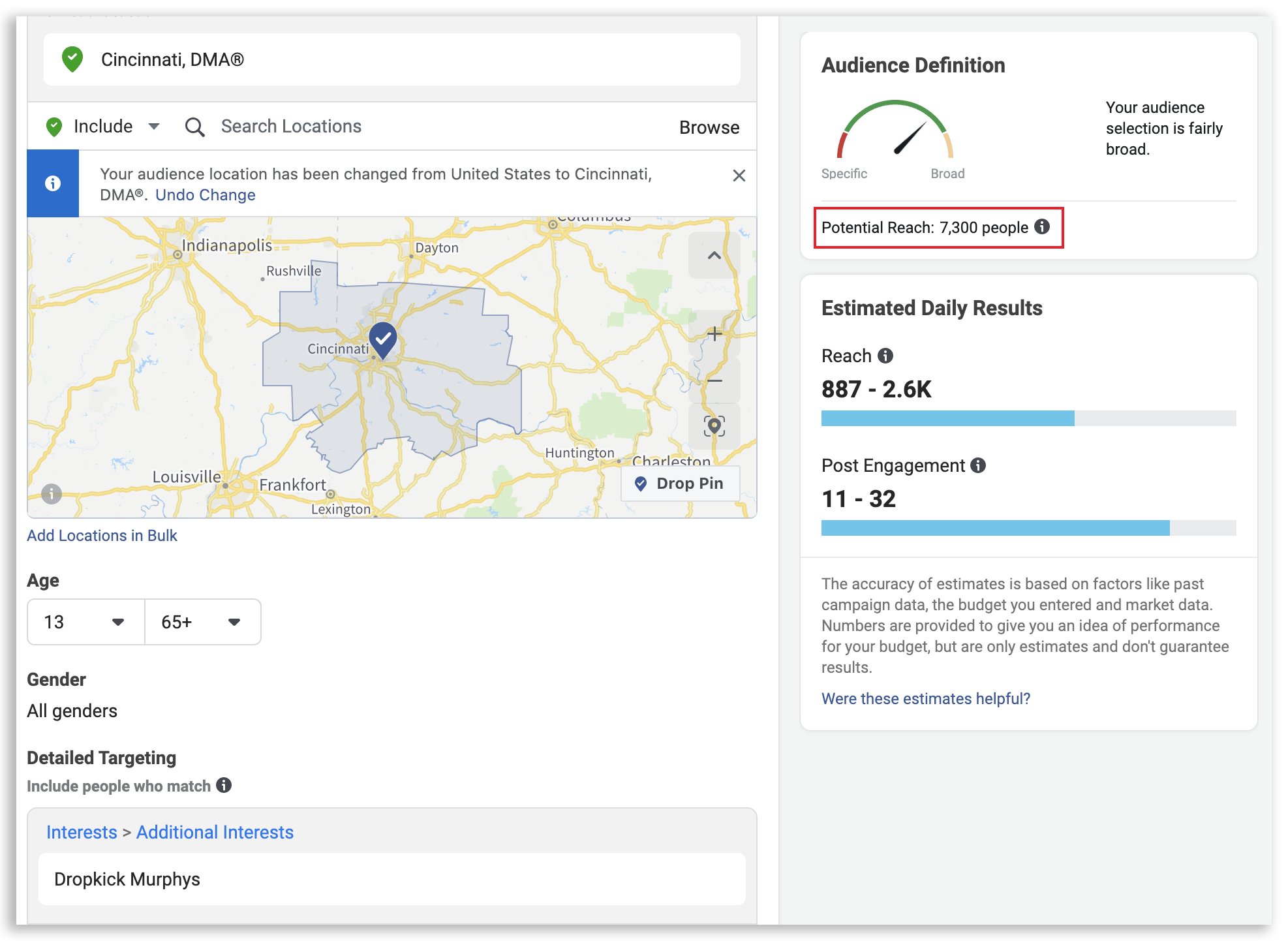
- Remove the original artist (Josh Ritter) as an additional interest. Your Potential Reach number will decrease slightly. The difference in potential reach is how many people follow your artist. In our example, the reach changed from 8,100 to 7,300. Our difference of 800 implies that there are 800 people in the Cincinnati market that are interested in Josh Ritter (and not Dropkick Murphys).
How do I use this information?
Having this number isn’t a silver bullet, but it helps. Compare your results with other markets, other artists, and Pollstar numbers to get a good understanding of how a show may perform:
How popular is this artist in relation to another artist I have more information on?
Certain genres are more popular on Facebook/Instagram than others. If you are gathering information on an emerging artist you are not going to have any historical sales data to work with in Pollstar. However, you could look at how popular an established artist in the same genre is on Facebook & compare. This is certainly not an exact science, but it can help you identify trends.
How popular is this artist in my market vs. another market I have more information on?
We all know that artists perform very differently in different markets, especially near the start of their careers. That’s the problem with looking at an average on Pollstar, right? By changing the geographic targeting in Facebook Ads Manager you can see how popular an artist is in one market vs. another. If you have history with the artist in another market, or can share information with another promoter there this can be a valuable gauge to help you on your way.
Comparing Pollstar Averages to Facebook Potential Reach
If an artist has a stable touring history & a pretty good contingency of their fans are active on Facebook/Instagram then the potential reach on Facebook should be eerily similar to their average number of tickets sold on Pollstar.
Generally, It's a good idea to use the two numbers to confirm you are in the right range when drafting an offer. Sometimes you can identify artists that are more popular in your market than the average. However, sometimes people may follow an artist with no intention of ever paying to see them play. Use your best judgement.
In our example, as of the moment this post was created Josh Ritter's average on Pollstar was 833 tickets sold - which is right in line with our Facebook Number above.
